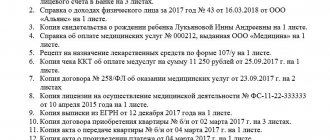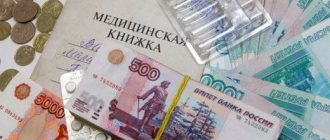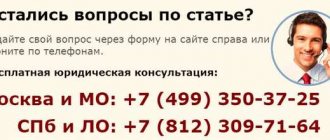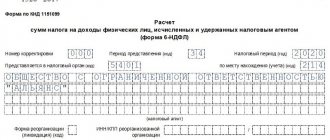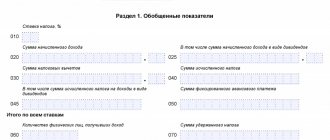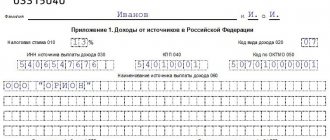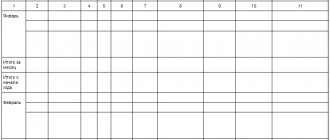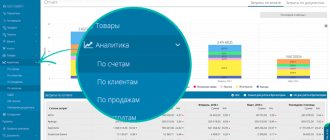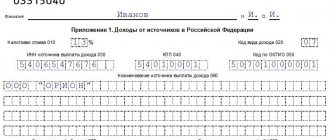If a citizen has registered an individual entrepreneurship, then he automatically acquires the obligation to submit reports, the composition of which depends on the chosen taxation system.
At the end of the calendar year, an individual entrepreneur in the general tax system draws up a declaration in form 3-NDFL, in which he reports to the Federal Tax Service on the annual income/expenses received.
For 2021: Sample of filling out 3-NDFL for individual entrepreneurs on the general regime for 2021.
Deadlines for submitting 3-NDFL and paying tax for individual entrepreneurs
Individual entrepreneurs need to submit a declaration for 2021 between 01/01/2021 and 04/30/2021. If a Russian businessman decides to stop operating as an individual entrepreneur, he will need to submit 3-NDFL within five days after making a mark in the Unified State Register of Individual Entrepreneurs (clause 3 of Article 229 of the Tax Code of the Russian Federation).
For example, IP Saikov Stepan Vasilievich lost his IP status on May 22, 2021, on the same day this fact is reflected in the Unified State Register of Individual Entrepreneurs. Therefore, you need to submit 3-NDFL when closing an individual entrepreneur before 05/26/2021 inclusive.
Entrepreneurs have more time to pay taxes. The tax declared in 3-NDFL for 2021 must be transferred no later than July 15, 2021. From 2021, the procedure for calculating personal income tax advances has changed. Now individual entrepreneurs do not receive notifications from the tax office, but they themselves calculate advances based on the results of the quarter and transfer them to the tax office by the 25th of the next month. The tax is paid in installments - until April 25, July 25, October 25 and July 15 of the next year.
Filling out pages
Appendix 2 to the order of the Federal Tax Service, which approved Form 3-NDFL, contains the procedure for filling out the declaration. Before filling out, you should re-read these instructions to avoid possible errors.
Data needs to be entered only in certain pages indicated above, the rest remain empty and do not need to be submitted to the tax office.
First, you need to determine how the form will be filled out and submitted - manually, typewritten, in a program, electronically.
If the form is filled out on paper, be sure to use a pen with blue or black ink. The letters must be clear - capitalized and printed, and must clearly fit into the designated spaces. Empty cells are filled with a short line in the center. Correcting errors is not allowed; if the form is damaged, you must print a new one.
If the declaration is drawn up in electronic form, then the font must be courier new, size 16-18, the finished sample can be printed without borders of the cells.
Important points:
- the cost is indicated in rubles and kopecks;
- tax amounts - in full rubles;
- income/expenses in foreign currency are converted into rubles on the date of receipt of this income/expense;
- each page must have a number, individual entrepreneur’s tax identification number, last name, initials, signature;
- You only need to fill out 4 sheets and submit them to the tax office;
- filling begins with Appendix 2, then the second section, the first and title page, after which the sheets are numbered and folded in order.
You need to fill out 3-NDFL based on the data in the Income and Expense Accounting Book (ILC), which the individual entrepreneur must maintain throughout the year. Individual entrepreneurs are not required to keep accounting records; for the declaration, it is enough to have a KUDR, which can be drawn up in any form convenient for an individual entrepreneur.
When filling out the declaration, the entrepreneur needs to independently determine the actual income and expenditure part of his annual financial result and reflect it on the pages of form 3-NDFL.
Individual entrepreneurs pay advance payments throughout the year based on expected profits. The Federal Tax Service, based on individual entrepreneur data, determines the amount of advances that are paid based on the results of each quarter no later than the 15th day of the month following the reporting period.
At the end of the year, the individual entrepreneur must determine the amount of the advance paid and the actual amount of tax that needs to be paid based on real data.
The difference between the advance payment and the income calculated in the declaration must be paid to the budget. The need for additional payment arises if the tax payable according to real data turns out to be more than the advances paid. If you overpay, an individual entrepreneur can count on a refund of the overpaid tax.
What expenses can be taken into account?
IP expenses can reduce the tax base if they:
- actually paid in the reporting year;
- related to business activities;
- are documented;
- justified.
The following expenses can be classified as expenses:
- for raw materials, starting materials, semi-finished products, goods, fixed assets (material);
- for depreciation;
- to pay salaries to employees, etc.
If the expenses do not meet the above conditions, then the individual entrepreneur may not take them into account, but take a professional deduction of 20% of the annual income as a reduction in the tax base.
That is, the entrepreneur himself chooses what exactly he will accept as expenses - a deduction in the form of 20% of income or actual expenses subject to compliance with the conditions established by the Tax Code of the Russian Federation.
If there are few expenses or they are not supported by documents, then it is better to use a professional deduction.
Title page
You can fill out the first page of 3-NDFL first:
| TIN | TIN of an individual entrepreneur. |
| Correction No. | It is set to “0—” for the initial supply. If the declaration is corrected, the correction number is indicated. |
| Taxable period | Period code – 34 for individual entrepreneurs. |
| Year | 2019, if the declaration is filled out by an individual entrepreneur in 2021. |
| Tax authority | Federal Tax Service code where the report is submitted. |
| Taxpayer information | Include
|
| Information about the identification document | Include:
|
| Status code | Tax residents of the Russian Federation put “1”, non-residents – “2”. |
| Telephone | Contact information must be indicated with the city code. |
| Section "Reliability..." | Information about the person submitting the 3-NDFL declaration to the Federal Tax Service. |
Example of filling out a title page:
Section 1
This section is final and is filled in last after all the data is reflected on other pages.
If an individual entrepreneur must pay tax, then “1” is entered in field 010, and the amount to be transferred in field 040.
If the individual entrepreneur does not have an obligation to pay, then “3” is put in 010, and dashes in 040.
If an individual entrepreneur wishes to return funds from the budget at the end of the year, then “2” is entered in 010, and the amount to be returned in 050.
Lines 030 and 040 are filled in with data on KBK and OKTMO; these codes are entered into form 3-NDFL in any case, regardless of the annual financial results of the individual entrepreneur.
Example of filling out section 1:
Section 2
The section is important; it calculates the individual entrepreneur’s tax to be paid based on the tax base. It is important that all amounts are indicated excluding VAT (if an individual entrepreneur is its payer).
Filling out the lines of the second section of 3-NDFL:
| 1. Calculation of the tax base | |
| 002 | Individual entrepreneurs indicate “3”, which means “other”. |
| 010 | Revenue for the year excluding receipts from foreign companies (must be equal to the value of field 050 app. 3). |
| 020 | Total annual tax-free income (receipts from foreign companies are not included). IPs put zeros in this line. |
| 030 | The total annual taxable income is calculated as indicator 010 - 020. Individual entrepreneurs in this field indicate revenue from line 010. |
| 040 | The amount of deduction (professional for individual entrepreneurs) taken into account for the reporting year (equal to the value of field 060 app. 3). |
| 050 | Not filled in. |
| 060 | The tax base is equal to the difference between lines 030 and 040. |
| 2. Tax calculation | |
| 070 | Tax = Base from field 060 multiplied by rate from field 001. |
| 110 | Advances from field 070 app. 3. |
| 150 | Tax payable - if the tax amount from field 070 is greater than advances from field 110, it is calculated as the difference between the indicators of lines 070 and 110. |
| 160 | Tax refundable, if tax from 070 is less than advances from 110, is calculated as the difference between 110 and 070. |
Example of filling out section 2:
Appendix 3
The application calculates income from the activities of individual entrepreneurs and the amount of professional deduction, which reduces the base for tax calculation.
Line by line filling is presented in the table:
| 1. Type of activity | |
| 010 | Code of the type of activity from Appendix 5 to the Filling Out Procedure, individual entrepreneurs indicate 01, which means entrepreneurial activity. |
| 020 | Primary activity code – OKVED, specified during registration of individual entrepreneurs. |
| 2. Indicators for the tax base and tax | |
| 030 | Amount of annual income excluding VAT. |
| 040 | The amount of annual expenses excluding VAT (divided into four components indicated in lines 041, 042, 043 and 044). This field is filled in if the individual entrepreneur is able to confirm the expenses with documents, and they are truly related to business activities. If this is not the case, then you should fill out field 060, which indicates a professional deduction in the amount of 20% of expenses. |
| 3. Total | |
| 050 | Income from line 030 (if an individual entrepreneur has filled out several appendices 3 at different tax rates, then the total income for all lines 030 is calculated and entered in this field). |
| 060 | Either expenses from line 040 or 20% of income from line 030 are indicated. |
| 070 | Advances paid during the year (calculated by the tax authorities based on information about the profit of the individual entrepreneur). |
| 4. Information provided by peasant farms | |
| 080 | Only peasant farms fill in. |
| 5. Information about self-adjustment | |
| 090-100 | It must be filled out if the individual entrepreneur adjusted the tax base independently in accordance with clause 6 of Article 105.3 of the Tax Code of the Russian Federation. |
Lines 110-150 are not filled out by individual entrepreneurs; they are intended for individuals without a business background to indicate income from sources from Annexes 1 and 2.
Example of filling out Appendix 3:
3-NDFL for individual entrepreneurs on the simplified tax system
In general, a 3-NDFL declaration for individual entrepreneurs using the simplified tax system is not needed, since they are exempt from paying income tax. 3-NDFL will have to be submitted in the following cases:
- during the year, the individual entrepreneur lost the right to use the simplified tax system and automatically switched to OSNO;
- The individual entrepreneur took out a loan that resulted in a material benefit, for example, an interest-free loan from an organization;
- An individual entrepreneur sells his property as an individual or wants to receive a tax deduction.
Submit your 3-NDFL reports on time and without errors!
3 months Kontur.Externa as a gift Try
How to calculate income and expenses
Moving on to filling out data on income and expenses, you need to start by filling out the type of business activity code - 01, OKVED - “31.02”.
KUDiR for individual entrepreneurs - what is it, how to fill out the journal on the simplified tax system and OSNO
Income and expenses of an individual entrepreneur are calculated quite simply. Income is reflected in line with code 030 in the certificate. On OSNO, income is calculated as follows: the entrepreneur’s revenue for the year minus accrued VAT in the amount of 20%. If an organization produces excisable products, then excise taxes in the established amount are also deducted. But simply subtracting 20% from the amount of revenue will be incorrect, since tax calculation has its own subtleties and can be calculated incorrectly. For example, in the reporting year, revenue amounted to 1,000,000 rubles.
We calculate income using the formula: 1,000,000*100/120 = 833,333.33 total income. This figure should be equal to the total of section VI in the book of income and expenses. If the numbers do not match, it is necessary to check the correctness of the accounting for profit accrual transactions (postings).
Reference ! If an individual entrepreneur, according to Article 145 of the Tax Code, is exempt from paying VAT, then calculating income becomes even simpler: the VAT standard of 20% will not be included in the calculation.
Example ledger
Next, fix the individual entrepreneur’s expenses for the year. This is necessary to reduce the tax base. To calculate the amount of expenses, it is necessary to take into account and calculate the amounts of: material costs, depreciation, accruals and remuneration to individuals, individual entrepreneurs and the amount of other expenses (wages, production costs, losses within the norms, for example) from the book of income and expenses. Next, these amounts must be added up to obtain the total amount of actual expenses. The tax authority will use it to reduce the tax base. After filling out the expense line, the following lines are filled in below separately for each type of expense.
3-NDFL for individual entrepreneurs on UTII
UTII will be abolished from 2021, but those who worked under this regime in 2020 may have to submit 3-NDFL. In general, there is also no need to submit this declaration for UTII. After all, the imputed tax replaces a number of other taxes, including personal income tax.
You will have to submit a declaration:
- in the case of combining UTII and OSNO, but only for income from activities taxed under OSNO;
- in case of loss of the right to use imputation during the year and automatic transition to OSNO;
- if an individual entrepreneur conducted transactions with personal property (for example, sold his car), you need to report as an individual;
- if you wish, receive a tax deduction.
Personal appearance at the tax authority
Methods for filing a declaration can be divided into 3 methods. The first is the personal appearance of the responsible person at the tax authority at the place of registration and the direct delivery of documents to the tax inspector. This method is convenient because a gross error or lack of documents will most likely be noticed by the inspector immediately and promptly corrected by the person in charge. But, at the same time, the method is not suitable for those who do not have time to go to the authorities or cannot be in the city (or other locality) where they need to submit a declaration.
It must be taken into account that the human factor can also have an impact on personal appearance: sometimes inspectors refuse to accept documents, although there are no official grounds for this. In rare cases, they require a document that the taxpayer is not required to provide. And such documents, as a rule, take longer to check than those received by mail or through the website of the federal tax service.
Personal Area
Postal delivery
The second common method is submitting documents by mail. To do this, all the necessary documents are sent by mail and take the individual entrepreneur less time than going to the Federal Tax Service. In this case, inspectors must indicate the reason for refusing to accept documents in writing. Additional documents are obtained through an official request. In addition, this method is the most convenient when personal appearance at the tax authority is impossible.
Individual entrepreneur on the Federal Tax Service website
An even faster and easier way. Since 2015, there is no need to have an electronic digital signature for this. You need to create a personal account and, following step-by-step instructions, send documents. The advantage over regular mail is that it does not require time even to transport documents by the postal service. The documents are instantly received by the tax authority, and returns and any other operations are also carried out via the Internet without the requirement for personal appearance of the individual entrepreneur.
Note! All this is completely free and as fast as possible.
3-NDFL zero for individual entrepreneurs
You are required to present a zero form if the individual entrepreneur did not conduct business, but is legally obligated to submit this form. This is also necessary if there was no income at all or if it turned out to be less than expenses. This mainly applies to individual entrepreneurs on OSNO.
The composition of the zero is simple: title page, sections 1 and 2. Cells that should contain digital values (income, etc.) are crossed out.
Submit your 3-NDFL reports on time and without errors! 3 months Kontur.Externa as a gift
Try it
Penalties
Businessmen often ask accountants what will happen if they fail to submit 3-NDFL? Forgetfulness in this case will cost the businessman money. The fine will be calculated for each full and partial month of delay - 5% of the personal income tax amount. The minimum loss for an individual entrepreneur is 1,000 rubles. In the worst case, the individual entrepreneur will have to pay 30% of the tax amount - this is the maximum limit of the fine, that is, more than 30% cannot be taken from a businessman.
Let's show it with an example. Individual Entrepreneur Timofey Ilyich Amosov sent form 3-NDFL on 06/24/2021. Thus, Amosov T.I. was two months late (an incomplete month is taken as one whole month). The declared personal income tax is 76,140 rubles. This means the fine will be 7,614 rubles (76,140 x 2 months x 5%).
Here's another example. Individual entrepreneur Timofey Ilyich Amosov declared tax in the amount of 393,000 rubles, but submitted the declaration only in November. Following the law, the accountant calculated the fine and received 137,550 rubles (393,000 x 7 months x 5%). The amount received exceeds 30% of the tax (393,000 x 30% = 117,900). Consequently, individual entrepreneur Timofey Ilyich Amosov will pay 117,900 rubles, and not 137,550 rubles.
In addition, for failure to submit a declaration, an entrepreneur may be fined in the amount of 300 to 500 rubles.
